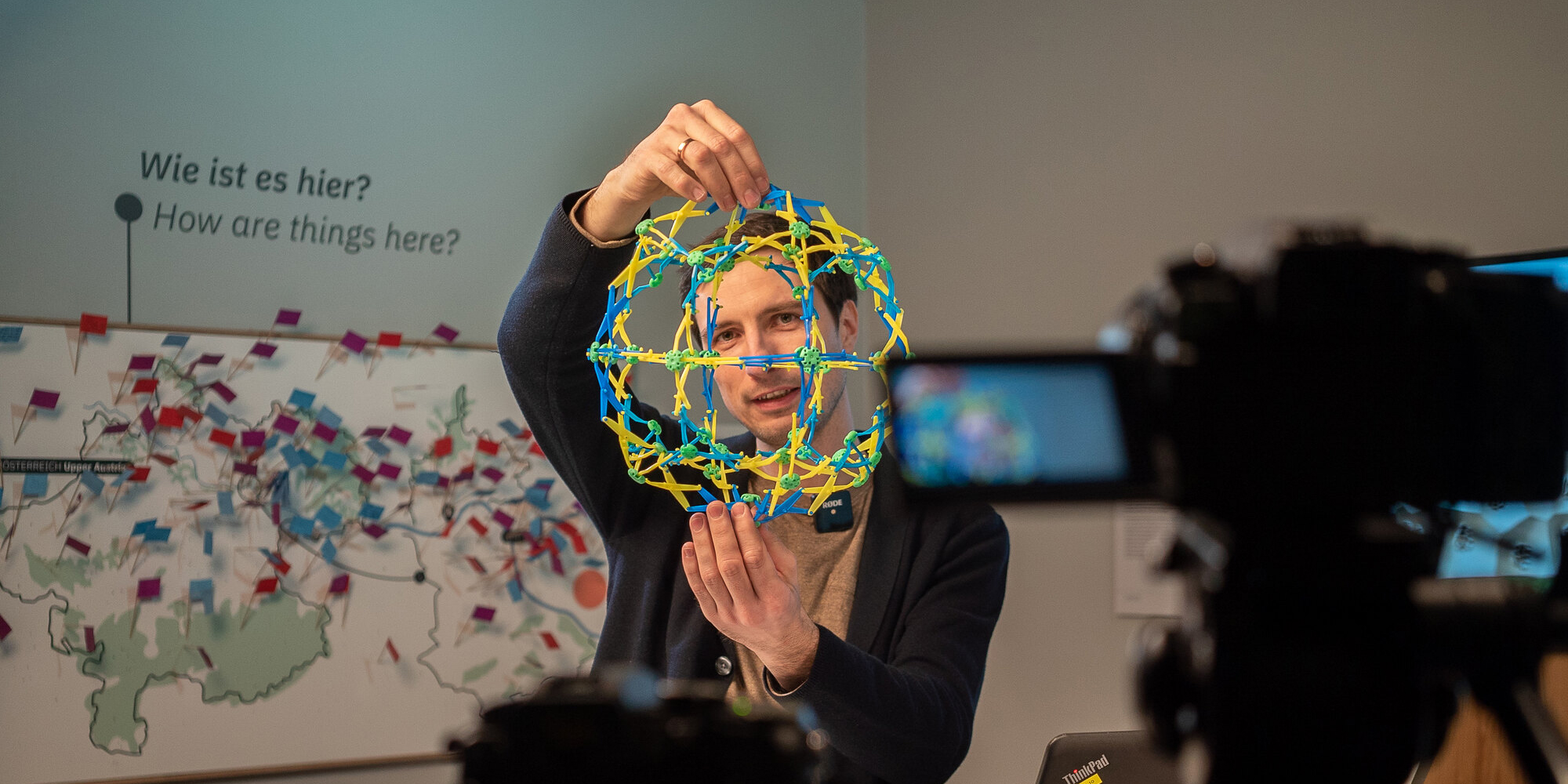Press release as pdf
Ars Electronica Blog
Ars Electronica Home Delivery
(Linz, 9.12.2021) The best way to prepare for the future is to help shaping it. All of the workshops and tours that Ars Electronica develops and offers for school classes either online, hybrid or on-site have this conviction and message in common. “We don’t lecture our students about what the future will be like or tell them what they need to do or be able to do to be successful in the future,” clarifies Christoph Kremer, Director of the Ars Electronica Center. “We want to encourage young people to develop and implement their own ideas. We want them to become aware of their creative possibilities and turn their ideas about the future into reality.” The digital tools that can be helpful in this process, in what these programs and systems are top notch and in what they are grotty, and in exactly what imaginative and sustainable ways creative minds from the arts and sciences use new technologies, is something the students learn in a playful way. “Our programs are designed to complement classroom instruction,” says Christoph Kremer. “We use the infrastructure, expertise and network of the ‘Museum of the Future’ to offer a ‘School of the Future’ on-site or online.”
The programs are aimed at different levels and types of schools and are conducted on-site, hybrid or online, depending on preference (and pandemic-related constraints). In terms of content, the focus is on classic Ars Electronica themes-it’s all about new technologies and their impact on our lives. The formats present themselves as a varied mix of video conferences, interactive and analog demos. Using tools like Mentimeter, surveys, question rounds and interactive quiz games are also part of the programs. An overview of all of Ars Electronica’s school offerings is available at https://ars.electronica.art/homedelivery/en/services/.
Example 1: The Digi-Tour (1st to 4th grade)
What are the real game changers among the much-cited new technologies, and why? The “Digi Tour” takes elementary school students through the “Kids’ Research Lab” and provides playful insights into the interplay between the analog and digital worlds …
Example 2: AI & YOU (from 5th grade)
How can AI systems guide us from A to B while not knowing what a street or a house is? How can yet other “intelligent” systems identify cancer cells while having zero knowledge of what it means to be sick? How intelligent are all these AI systems, actually, and what does the term “artificial intelligence” even mean? As part of the virtual tour “AI & YOU,” students gain a basic understanding of this technology and can discuss the range of its current applications.
Example 3: From the classroom into space (all school levels)
Since June 2016, the Ars Electronica Center in Linz has been the official “European Space Education Resource Office” – ESERO for short – Austria. The goal of this Europe-wide network initiated by ESA is to inspire young people with a fascination for the subject of space and to introduce them to fields of scientific and technical research. How does this work? With an excursion “From the classroom into space,” for example. Using the free Stellarium software, astronomers introduce students to the night sky – explaining our solar system, constellations and the ecological effects of increasing light pollution.
Photo:
Ars Electronica school programs / Photo: Ars Electronica – Robert Bauernhansl / Printversion
Photo:
Ars Electronica school programs / Photo: Ars Electronica – Robert Bauernhansl / Printversion
Photo:
Ars Electronica school programs / Photo: Ars Electronica – Robert Bauernhansl / Printversion
Photo:
Ars Electronica school programs / Photo: Ars Electronica – Robert Bauernhansl / Printversion
Photo:
Ars Electronica school programs / Photo: Ars Electronica – Robert Bauernhansl / Printversion


